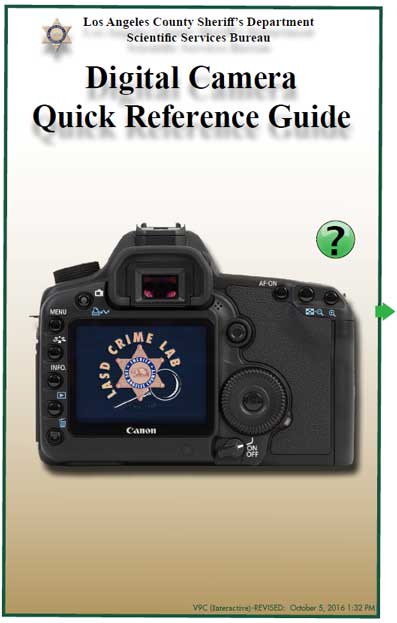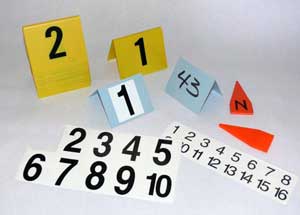|
View in browser: https://www.crime-scene-investigator.net/newsletter/0120.html
|
||
|
JANUARY 2020 | ||
| ||
|
This Month's Featured Resource on the Crime Scene Investigator Network Website
|
||

Erika Di Palma, Yvette Gonzalez and Roger W. Vargo This interactive guide covers the following topics:
The Los Angeles Sheriff's Department has made this interactive PDF available free of charge. The PDF may be saved on your smartphone for access at a crime scene. <Read/download the Publication> |
||
|
New CSI and Forensic Job Announcements
|
||
|
The most comprehensive listing of Crime Scene Investigation and Forensic To be notified of job openings as they are posted, follow us on Twitter: Job Posting Alerts |
||
|
Crime Scene Technician
Pinal County Sheriff's Office, Florence, Arizona, USA Final Filing Date: January 27, 2020 Perform a variety of technical tasks in the documenting, collection, photographing, tracking, handling, safekeeping, and packaging of crime scene evidence for the Pinal County Sheriff's Office (PCSO) under basic supervision. <View complete job listing> |
||
|
Forensic Science Technician I
Charles County Sheriff's Office, La Plata, Maryland, USA Final Filing Date: January 27, 2020 This critical position involves work relative to a variety of technical duties to include documenting investigations, recovering physical evidence, photographing crime scenes, attending autopsies, transporting forensic evidence to various laboratories, and testifying in court. <View complete job listing> |
||
|
Crime Scene/Property Evidence Specialist
Menifee Police Department, Menifee, California, USA Final Filing Date: January 30, 2020 Identifies, examines, photographs, collects, preserves and transports evidence from crime scenes; searches for latent impressions, collects contact DNA, blood and other physical and trace evidence on a variety of objects and surfaces. Photographs, videotapes, sketches and diagrams crime scenes to ensure documentation of crime scenes and evidence; prepares reports and maintain records and logs of crime scenes and evidence collected. <View complete job listing> |
||
|
Property Control Specialist
Josephine County Sheriff, Grants Pass, Oregon, USA Final Filing Date: January 26, 2020 The property control specialist is responsible for the care, storage, and proper control of all evidence and found property seized and placed in the Josephine County Sheriff's Office property control room. <View complete job listing> |
||
 |
||
|
Forensic Scientist I-III, Seized Drugs
Texas Department of Public Safety, Tyler, Texas, USA Final Filing Date: January 29, 2020 Performs independent laboratory tests, analyses, classifications, comparisons and identifications of all types of physical evidence from crime scenes with emphasis and specific recognized expertise in an option or specialty area identified above. Work involves interpreting analytical and instrumental results, and preparing written opinion reports. May perform crime scene investigations. Testifies as an expert witness in court as to results of analyses. <View complete job listing> |
||
|
Firearms Examiner
Montgomery County Sheriff's Office, Conroe, Texas, USA Final Filing Date: January 31, 2020 Forensic examination and comparison of firearms and firearms related evidence. Serial number restoration. Distance determination recommended. Preparation of detailed technical reports outlining the results of examinations along with appropriate supporting documentation. Provide clear and concise courtroom testimony as an expert witness related to examination procedures and results. Must remain abreast of advances in examination techniques and changes within the firearms industry. Respond to crime scenes to provide technical assistance as directed by a Crime Lab Supervisor. <View complete job listing> |
||
|
Forensic Scientist Trainee (Chemistry/Controlled Substances)
Nassau County Medical Examiner, Division of Forensic Services, Westbury, New York, USA Final Filing Date: Open until filled Participates, under the direct supervision of a higher level Forensic Scientist in the designated specialty, in a program of study that will enable the incumbent to become proficient in the designated specialty. Assists higher-level personnel with complex analyses, examinations, data gathering and other related activities. Performs preliminary chemical, physical, microscopic and instrumental analysis of physical evidence. <View complete job listing> |
||
|
Fingerprint Technician Trainee
Illinois State Police, Joliet, Illinois, USA Final Filing Date: January 22, 2020 Under immediate supervision, participates in an agency sponsored training program to develop the knowledge, understanding and technical skills necessary to function as a proficient Fingerprint Technician. After successfully completing one year as a trainee, the individual will be expected to assume the duties and responsibilities of a qualified Fingerprint Technician. <View complete job listing> |
||
|
Search for more job listings in Crime Scene Investigations and Forensics To be notified of job openings as they are posted, follow us on Twitter: Job Posting Alerts |
||
|
Other Resources on the Crime Scene Investigator Network Website
|
||
|
Not Subscribed to this Newsletter?
|
||
|
If you are not subscribed to this newsletter, you may subscribe with this link: SUBSCRIBE via email |
||
|
To Unsubscribe
|
||
|
To unsubscribe from future e-mail alerts, please click here: UNSUBSCRIBE Copyright ©2020 Crime Scene Resources, Inc. Crime Scene Investigator Network |




